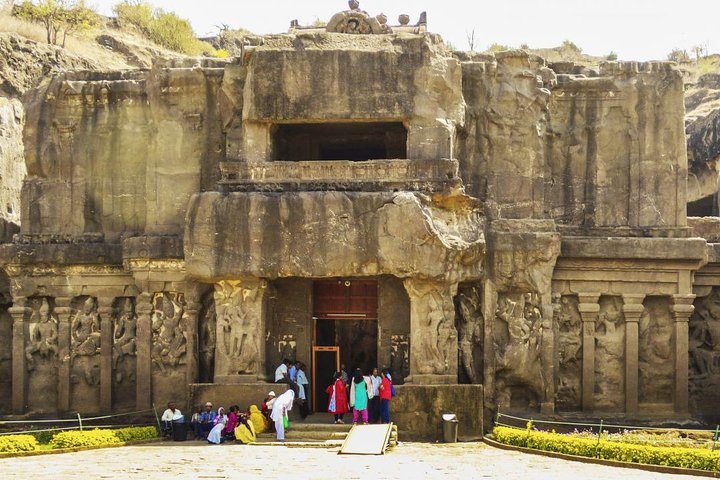Exploring the Timeless Beauty of Ajanta and Ellora Caves
Drawn by the allure of ancient artistry and spirituality, I embarked on a journey to the Ajanta and Ellora Caves. These UNESCO World Heritage Sites promised a deep dive into India’s rich cultural tapestry, and I was eager to explore their historical significance.
A Journey Through Time: The Ajanta Caves
As I embarked on the journey to the Ajanta Caves, I was filled with anticipation. The drive from my hotel was a scenic one, with the landscape gradually transforming from urban hustle to serene countryside. Upon arrival, the sight of the caves carved into the mountain face was nothing short of breathtaking. The Ajanta Caves, with their horseshoe shape, are a testament to the artistic prowess of ancient India.
Walking through the caves, I was transported back in time. Each cave, dedicated to the life of Buddha, told a story through intricate carvings and paintings. The Jataka tales depicted on the walls were mesmerizing, offering a glimpse into the spiritual and cultural life of ancient India. The experience was made even more profound by the need to remove my shoes, a gesture of respect and mindfulness that resonated deeply with my own cultural practices.
The guide’s insights into the history and significance of the caves enriched the experience. I was particularly struck by the way these rock-cut temples have withstood the test of time, preserving the legacy of a civilization that valued art and spirituality. The Ajanta Caves are not just a historical site; they are a living testament to the enduring power of cultural expression.
The Majestic Ellora Caves
The journey continued to the Ellora Caves, another marvel of ancient architecture. Unlike Ajanta, the Ellora Caves are a blend of Hindu, Buddhist, and Jain monuments, reflecting the diverse religious landscape of India. The sheer scale of the site, with its 34 monasteries and temples, was awe-inspiring.
Cave 16, the Kailasha Temple, stood out as a masterpiece of rock-cut architecture. This chariot-shaped monument dedicated to Shiva is one of the largest monolithic structures in the world. As I explored the temple, I was captivated by the relief panels depicting legends from Hindu epics. The craftsmanship and attention to detail were extraordinary, a testament to the skill and devotion of the artisans who created it.
The ability to explore the caves with shoes on and take photos with flash allowed me to capture the beauty of the site without restrictions. The Ellora Caves are a celebration of India’s rich cultural tapestry, where different faiths coexist and thrive. It was a reminder of the importance of preserving such sites for future generations to appreciate and learn from.
Reflections on a Cultural Odyssey
As the day came to a close, I found myself reflecting on the profound impact of the Ajanta and Ellora Caves. These UNESCO World Heritage Sites are more than just tourist attractions; they are sacred spaces that offer a window into the soul of ancient India. The artistry and spirituality embedded in these rock-cut temples are a testament to the enduring legacy of a civilization that revered both.
The tour was not just an exploration of historical sites but a journey into the heart of India’s cultural heritage. It was a reminder of the interconnectedness of art, religion, and history, and how these elements shape our understanding of the world. The Ajanta and Ellora Caves are a must-visit for anyone seeking to immerse themselves in the rich tapestry of India’s past.
This experience has deepened my appreciation for the cultural diversity and historical richness of Asia. It has inspired me to continue exploring and sharing the stories of this vibrant continent with all of you. Until the next adventure, may we all find inspiration in the beauty and wisdom of the past.









































